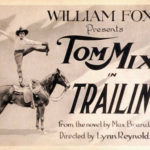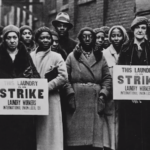The Projectionist is Dead, Almost
Slate reports today (December 6 2010) something that has been mooted often, since about 1980 if not earlier: The demise of the film projectionist.
The article does not really relate news, but does do a great job of explaining why the trade is more and more rapidly dying.
The quick will soon be defunct. In the whole country, only one union local remains as an uncombined projectionists union, and that’s Local 306 in New York City. In the 1940s and 1950s, it had 3,000 members; now it has 400, and falling, even though the country has more movie screens than ever.
Of course, the megaplex is the culprit. Or is it? That’s the historical and economic dynamic that Grady Hendrix explores in his article.
Hendrix, who runs the New York Asian Film Festival, writes that from the earliest days of cinema until the 1960s, projection booths accommodated reel changes with two reel-to-reel projectors equipped with carbon arc lights.
Xenon lights came into use in the late 1960s, gradually displacing arc lights. Although expensive at up to $1,000 each, they not only provided strong, steady light, but began a drift towards a state of affairs that has increasingly delighted cinema operators: They didn’t need to be monitored, so saved on labor costs, notes Hendrix.
Reducing such costs to nothing has, perhaps not surprisingly, long remained one goal of operators. So things usually go.
Ever since, operators have welcomed innovations that have allowed them to let projectionists go. With the light issue solved, all that lacked was a system for automating the otherwise labor-intensive task of loading, monitoring, and changing film reels.
First, then, came the film platter, in the mid-1970s. Those held very large reels, relieving projectionists of the need to change film reels every 20 minutes. The devices were called platters because the supersized reels were laid on their side, on a spinning platter, rather than mounted upright, and shown from one projector.
Chain theaters championed that development – for more than 20 years, you’ve been able to go to many a local megaplex and look through a window into a projection room at the ghostly sight of several films running at once, unattended.
In the process, chain theaters got out from under union contracts, as so many industries did under the Reagan-Bush dispensation. They also shucked off most licensing standards, Hendrix writes – that, because projectionists no longer had to demonstrate mastery of electrical issues, or so the operators persuaded state licensing authorities.
Hendrix notes that, for viewers, the downside was that with only one projectionist running many projectors, bulbs often deteriorated undetected, and the projected image dulled.
You may well have observed this downturn of quality, but you’ll also have noticed that virtually no megaplex-goer ever spoke up, like in the old days, to alert the projectionist that the film had come off the projector’s sprockets, or that a big ole hole was burning in the celluloid.
Due to these earlier developments, you’re way off the pace if you’re just noticing now that projectionists are disappearing, altogether. But there is a new force speeding them towards their disappearance, Hendrix notes. That is, of course, digital projection. It will, he says, see films downloaded from some distant site to hard drives in theaters and then beamed onto screens. Projectors will still be used, but “that will be the end of union projectionists,” Hendrix says.
That would have happened already, he says, but for one thing: “Our only saving grace is they can’t manufacture these digital machines fast enough.”
Previous Post: Digging the Jazz Icons from TV Archives
Next Post: Preservation Training Workshops and Webinars




